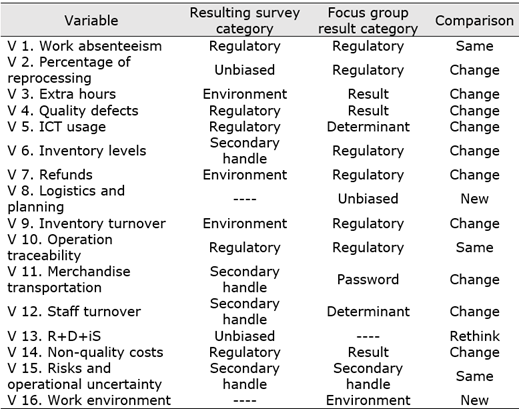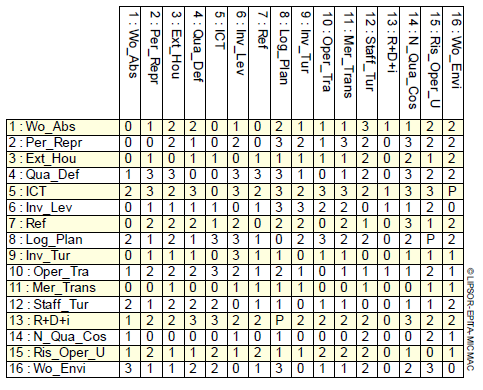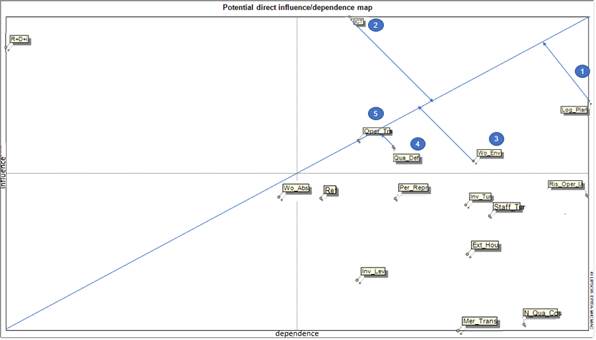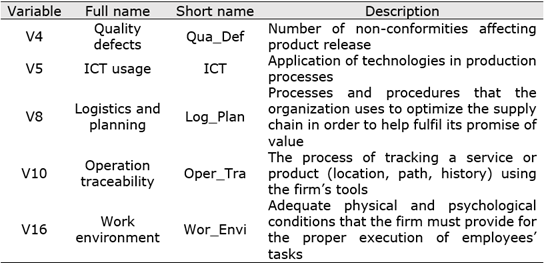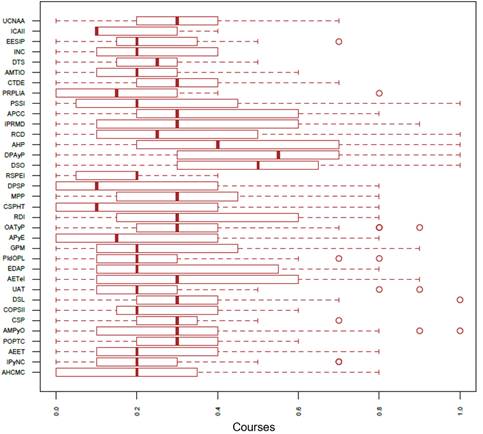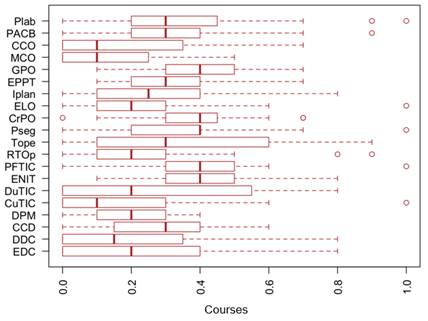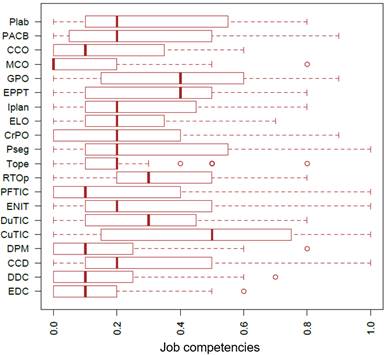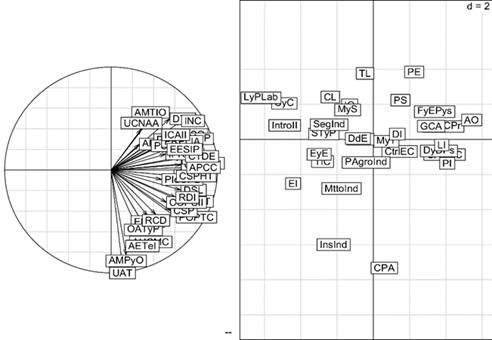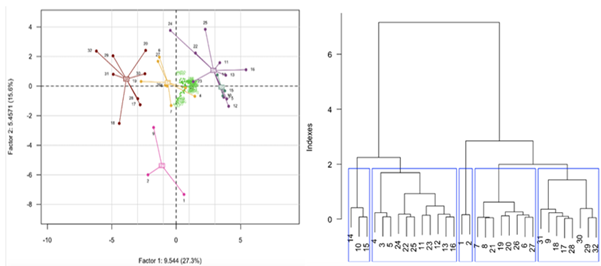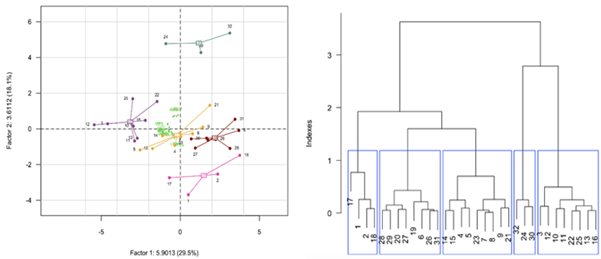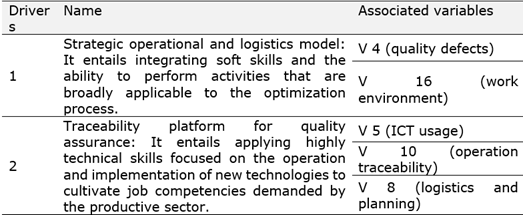INTRODUCTION
This article provides an overview of the acquisition of engineering competencies related to the optimization of production and logistics processes in the Colombian context. In addition, it adopts a comparative approach to identify and analyze the generic skills of engineering students. In this regard, Castrillón et al. (2015) highlight the need to reduce the gap between theoretical and practical competencies in higher education programs in Colombia. For his part, Rodríguez-Zambrano (2007) defines competencies as the skills and behaviors necessary for successful job performance and suggests considering the impact of competencies on the education-work-life relationship. Thus, the research question proposed in this study is as follows: What is the systemic relationship between academia and businesses in Colombia regarding the development of skills and competencies related to the optimization of production and logistics processes?
THEORETICAL BACKGROUND
The study described in this paper builds upon three theoretical frameworks: a) optimization of production processes, b) optimization of logistics processes, and c) skills as a necessary component of training.
Optimization of production processes
The First Industrial Revolution (1760-1840) and the Second Industrial Revolution (1870-1914) marked the beginning of practices aimed at increasing production capacity, automating processes, developing innovative machinery, implementing large-scale production, using new technologies, and globalizing industry. These changes led to improvements in quality of life and the optimization of manufacturing processes (McNeil, 2002). Following that, approximately in 1947, linear programing was introduced and, in 1963, Dantzing-considered the father of linear programming-proposed the simplex method, thus making an important mathematical contribution to optimization (Dantzing, 1963).
Subsequently, between 1946 and 1975, the Toyota production system was created by Toyota’s founder Sakichi Toyoda, his son Kiichiro Toyoda, and the engineer Taiichi Ohno (Toyota Industries Corporation, 2024). This development, together with the emergence of international quality standards, promoted the adoption of process management systems.
Process management did not stop there. Business Process Reengineering (BPR) appeared in 1990 (Zairi & Sinclair, 1995) and gave rise to Business Process Management (BPM) in the 2000s-which is widely applied in industry. Although BPR is a radical concept and BPM is incremental, both emphasize the importance of quality and optimization. In European countries such as Germany, Ireland, the United Kingdom, and the Netherlands, where BPM is a growing field of study, it has made significant contributions to process optimization (Rozwell & Olding, 2009).
In the Colombian context, Alejandro López Restrepo is considered the father of management (Mayor Mora, 1988). In 1912, while leading the Escuela de Minas de Medellín, he introduced the Chair of Industrial Economics, after translating Taylor’s work. His purpose was to study and promote scientific management, which later evolved into research on the principles of organization and management of industrial firms, locally called ’Industrial Engineering’ (López Gallego, 2001). In 1928, López published El Trabajo, where he documented his experience and proposed training engineers with management competencies. This proposal was a key factor in the growth of some industrial firms in Colombia (Martínez Fajardo, 1999), hence its relevance to the study of the development of the country’s productive sectors.
Optimization of logistics processes
Logistics in prehistory arose from the need to store, manage, and control resources. Later, between 500 and 430 BC, the Greeks, Athenians, and Romans began to define logistic profiles for certain people to perform tasks related to management and calculation. The term ‘logistics’ was first used in 1838, when Antoine-Henri Jomini spoke of ‘military logistics’ in Europe (Jomini, 1840).
Identifying optimal systems enabled humanity to discover potential in existing developments. Thus, the World War I (1914-1918) marked the beginning of logistics optimization, as optimization models were applied by the parties in conflict to facilitate transportation, establish routines, manage inventories, and distribute resources. After the World War II (1939-1945), firms became interested in logistics and started to integrate military logistics concepts into industrial logistics, which increased efficiency and productivity. This was later called ‘process optimization’.
In 1956, Malcolm McLean, often referred to as the father of containerization, used the concept of ‘supply chain’ to create an efficient system that reduced both time and costs. By 1960, the concept evolved into ‘supply chain management’.
Authors such as Bonilla and Borroto, Magee, Lalonde, Bowersox, Sahid, Gómez Acosta and Acevedo Suárez, and Lamb et al. (as cited in Betancour, 2012), despite defining logistics differently, agree that it is a systemic approach that encompasses the entire process from purchase to delivery to the final customer.
The Colombian War of Independence (1810-1824) marked the country’s incursion into logistics. According to Olano García (2011), general officers were the first to implement logistics chains and models for the transportation of food, goods, and armament during war. Logistics chains have experienced a progressive growth in Colombia due to globalization, land transportation is now preferred over rail transportation, and industry is segmented in the central region of the country (Ferrer et al., 2019). Moreover, current focus of optimization is on time, cost, and resource investment.
Skills as a necessary component of training
Speaking of competencies is to take up again the thoughts and writings of Western philosophers such as Plato, Aristotle, Parmenides, and Protagoras, who referred to human beings and knowledge, but without a clear definition of their cultural importance. Since then, many authors have proposed definitions and practical notions of competencies. McClelland, Mertens, Boyatzis, Vargas, the Pan American Health Organization (PAHO), the International Labor Organization (ILO), the Spanish National Employment Institute (abbreviated INEM in Spanish), the Colombian National Training Service (abbreviated SENA in Spanish), the Colombian Institute of Technical Standards and Certification (abbreviated ICONTEC in Spanish), and the Colombian Institute for the Promotion of Higher Education (as cited in Rodríguez Zambrano, 2007, pp. 149-150) coincide in denominations related to knowledge, know-how, skills, aptitudes, attitudes, and values.
According to Bunk, competencies can be classified as technical, methodological, social, or participatory. UNESCO divides them into cognitive, technical, or formative. For his part, Mertens classifies them as behavioral (personal and technical), functional, or constructivist, with a subdivision into basic, generic, or specific. Similarly, the ILO and SENA categorize them as basic, generic or transversal, and specific (Rodríguez Zambrano, 2007, p. 159).
The skills-based approach was first introduced in the United Kingdom in 1986. It was later adopted by Australia in 1990 and Mexico in 1996, seeking to increase the competitiveness of their productive sectors. Likewise, countries such as Germany, France, Spain, Colombia, and Argentina have implemented this concept through different governmental entities. The United States, Canada, Japan, and Brazil have also identified its potential for boosting their economic sectors (Ruiz de Vargas et al., 2005). In Colombia, the methodology for the acquisition of job competencies began to be developed in 2002 with SENA, following the recommendations of the ILO and with input from professionals and expert entities in the field (Cárdenas & Navas, 2012, p. 113).
The Colombian Ministry of National Education, through the sectoral plan for Education (2002-2006), promotes the development of competencies in higher education programs. However, it is important for Higher Education Institutions (HEIs) to speed up the transition from the teaching model to competency-based learning, change the organization from structured to flexible systems based on academic credits and the evaluation models to competency-based assessments with a view towards accreditation (Rodríguez Zambrano, 2007, p. 163).
According to Contreras-Germán et al. (2019), the term ‘competency’ has an ancient origin and connotation. However, it can also refer to the skills and abilities required to use technology in the era of Information and Communication Technologies (ICTs). In addition, it can be applied to various academic, economic, and social scenarios.
In this sense, as mentioned by Ochoa-Duarte and Reina-Rozo (2022), organizations such as Engineers Without Borders have been created around the world since the 1990s, seeking to integrate engineering and social competencies from different perspectives to meet national and international requirements.
In this way, some background information-which is part of the evolving body of knowledge on competencies-has been gathered regarding their study and applications in various contexts to facilitate the design of an experimental methodology.
METHODOLOGY DESIGN: METHODS AND TOOLS
This paper followed a descriptive method to narrate qualitative and quantitative experimental data. Simple correlational studies were employed to determine the courses offered and the academic skills and job competencies developed in industrial engineering, logistics, productivity, and quality programs in Colombia. They also served to identify the competencies required by the business sector for the optimization of production and logistics processes. The methodology was divided into three stages that are described below.
Stage 1. Target population and dialogue methods
The target population of this study was divided into two groups: HEIs and the business sector. Various methods and techniques were used to collect, classify, and analyze information or findings, following the proposals of Sautu et al. (2005) and Abarca Rodríguez et al. (2013).
Stage 2. State of the art
To synthesize the findings of the state of the art, a morphological space was elaborated to identify the systemic relationship between (i) the courses offered in HEIs; (ii) the academic skills developed in industrial engineering, logistics, productivity, and quality programs; and (iii) the job competencies required by the business sector in Colombia.
The content analysis started with the collection of information on 257 academic programs from the HEIs’ websites (Sistema Nacional de Información de Educación Superior [Colombian National System of Higher Education Information], 2020). The collected information was organized by institution, program, municipality or locality, occupational profile, specific component course, and learning variable.
As for the second component of the state of the art, a survey was conducted with 34 firms in four study sectors. This sample was drawn from a universe of 7,661 medium-sized firms located in the metropolitan area of Medellín. The probability of occurrence was 0.1 for this finite population, the confidence level was 95%, and the error on the estimate was 10%.
The purpose of the survey was to characterize the sample and measure the optimization of production and logistics processes. To this end, business owners had to select the variables applicable to their business models and rate their degree of dependence and influence on other variables on a strong-moderate-weak scale.
Subsequently, the collected information was validated through an exercise involving experts from the commercial, food, plastics, and textile sectors. A total of 29 experts were invited to participate, but only 19 (66%) accepted the invitation.
Stage 3. Analysis of key or strategic variables
To identify the key or strategic variables, the study employed the Cross-Impact Multiplication Matrix Applied to a Classification (MicMac) technique (Godet et al., 2000). This method makes it possible to establish the relationship between the 16 variables of the morphological space.
Qualitative analysis
Using the morphological space as a reference, a structural analysis was conducted, which offered the possibility of describing a system with the help of a matrix that interconnected all its elements. This analysis aimed to highlight the main influential and dependent variables and, therefore, the essential variables in the system’s evolution. The relationships between the variables were described using the MicMac technique (Godet, 1993). In a table of change factors, each expert rated the relationship among the variables using the following values: P: Potential, 3: Strong, 2: Moderate, 1: Weak, 0: Non-existent.
Quantitative analysis
Based on the results of the structural analysis, three quantitative techniques were employed to develop a methodological adjustment framework using analytical tools. This framework focused on the courses, academic skills, and job competencies resulting from the morphological analysis and related to the optimization of production and logistics processes.
This analytical construction was based on a series of relationships that mediated between courses, academic skills, and job competencies. It employed a rating scale from 0 to 1 to indicate the degree to which courses developed the academic skills or job competencies, and the degree to which academic skills met the job competencies. Thus, having built a morphological space, the analysis of key or strategic variables (patterns and relationships) was described using both qualitative and quantitative approaches. The findings and main results are explained in the next section.
ANALYSIS AND RESULTS
The interpretative interview or workshop lasted two hours. During this time, experts randomly rotated every seven minutes through four working tables that grouped the 16 study variables identified from the survey and related to the optimization of production and logistics processes. Based on these variables, 138 academic skills, 64 job competencies required by the business sector, and 154 courses that contribute to the acquisition of these competencies were collected. The competencies’ descriptions were written using the notions of learning objectives, drawing from Bloom’s taxonomy of thinking skills (1956), which evolved into Bloom’s revised taxonomy (Anderson & Krathwohl, 2001), followed by Bloom’s taxonomy for the digital age (2008), and ultimately reaching Bloom’s taxonomy associated with the SAMR model (2013). According to Tobón-Tobón et al. (2010), competencies to be developed or assessed from the analysis of contextual problems should include in their structure a performance verb, a conceptual object, a purpose, and a reference condition (p. 13).
Qualitative analysis
The identification of key variables provided a framework for organizing courses, academic skills, and job competencies related to the optimization of production and logistics processes. The dimensions that make up this construction are detailed below. Table 1 contains the 16 study variables.
The findings from all three stages of the methodology revealed patterns and relationships that help to determine the current state of the system. The MicMac1 analysis displayed the key variables and their relational matrix (see Table 2), showing motricity and dependence relationships.
To classify the 16 study variables in the different quadrants of the Cartesian plane, four zones were identified. Zone 1 encompasses input variables (input zone), such as variable 13 (R+D+i). Zone 2 contains link variables (conflict zone), such as variables 4 (Quality defects), 5 (ICT usage), 10 (Operation traceability), 9 (Logistics and planning), and 16 (Work environment). Zone 3 includes variables of low motricity and dependence (zone of autonomous variables), such as variable 1 (Work absenteeism). Zone 4 represents output variables (output zone), such as variables 2 (Percentage of reprocessing), 3 (Extra hours), 6 (Inventory levels), 7 (Refund), 9 (Inventory turnover), 11 (Merchandise transportation), 12 (Staff turnover), 14 (Non-quality costs), and 15 (Risks and operational uncertainty) (see Figure 1).
The variables in the upper-right quadrant are the most relevant and those that pose strategic challenges for organizations. Table 3 lists these five key variables, which were used to group the 35 academic skills, the 32 courses that contribute to the achievement of these skills, and the 20 job competencies required by the business sector.
Quantitative analysis
Using analytical tools such as box plot, Principal Component Analysis (PCA), and clustering, this section describes the findings regarding the relationships between the courses, academic skills, and job competencies considered in this study.
To assess the level of correlation between the courses, academic skills, and job competencies under analysis, the box plot graph tool was used. This tool allows for the identification of outliers and enables comparison of data distributions. The findings revealed a correlation of 71.88% between courses and academic skills. In short, courses such as design of experiments, industrial safety, project formulation and evaluation, planning, programming, and production control were found to greatly contribute to the achievement of academic skills (see Figure 2).
Moreover, the results indicated a correlation of 60% between courses and job competencies. Notably, job competencies related to the control of standardized operational processes, the development of good work practices, and the traceability of operations were here identified as business requirements that still need closer integration with academic content (see Figure 3).
Furthermore, a 85.71% correlation was observed between academic skills and job competencies. The findings demonstrate the importance placed by academia on the application of planning tools for optimizing and controlling production systems, as evidenced by its significant impact on three of the five study variables. To a great extent, this will help to create models that facilitate the management of quality defects, ICT usage, and operation traceability (see Figure 4).
Concerning the data structure described by the quantitative variables, PCA was used to express the key drivers and their components through a set of uncorrelated linear combinations of factors. The findings revealed a high correlation between academic skills and courses (particularly courses that contribute to skill development), albeit in a less proportion with normative courses in the environmental and social areas. Therefore, it can be concluded that the courses are relevant for the development of the academic skills. According to the findings, the competences related to productive operations in integral logistic systems, productive systems - project management and the operation of technological and scientific processes, have a lot of similarity and subjects that strengthen the fulfilment of their objectives (see Figure 5).
Regarding the relationship between job competencies and courses, organizational process management and tactical planning and scheduling were found to include a wide range of topics for competency development. According to the findings, the necessary follow-up in the different representative areas of the logistics chain and training programs for ICT usage contribute a significant number of courses for competency development. Notably, the thematic content related to the necessary follow-up in the different areas of the logistic chain was found to have a great impact on job performance. Moreover, the findings showed that operation traceability and standardized operational processes encompass courses with very similar thematic intensity (see Figure 6).
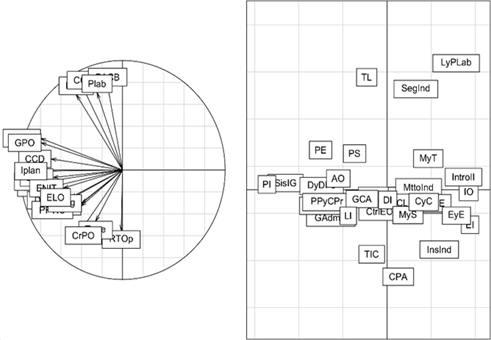
Figure 6. Principal component analysis - courses vs. job competencies
Source: Own work using Rstudio.
Additionally, a high correlation between academic skills and job competencies was observed. Particularly, the competency related to good work practices was found to have a great impact on academic skills (see Figure 7).
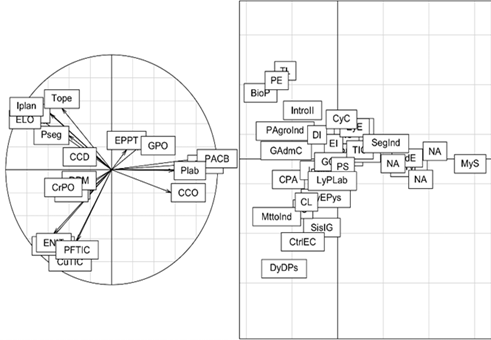
Figure 7. Principal component analysis - academic skills vs. job competencies
Source: Own work using Rstudio.
In this study, a clustering technique (dendrograms) was used to classify outcomes into clusters or groups that allowed the hierarchical identification of trends between the study variables and their components.
As for the clusters formed between courses and academic skills, five clusters were identified for the 32 courses under study. As observed in Figure 8, clusters 1 and 4 are very far from the academic skills, which means that the courses within these clusters do not contribute to the development of academic skills. Conversely, clusters 2 and 3 are the closest to meeting the requirements for academic skills.
Moving on to the clusters formed between courses and job competencies, five clusters were identified in grouping the 32 courses under analysis. As can be seen in Figure 9, clusters 3 and 2 are close to the job competencies, whereas clusters 4 and 5 are far apart from them. This suggests a mismatch between the courses that are taught and the real needs for job competencies.
Regarding the clusters formed between academic skills and job competencies, five clusters were identified for the 35 academic skills under study. As shown in Figure 10, clusters 1, 2, and 3 are close to the job competencies, while clusters 4 and 5 are considerably far from them. This indicates potential issues in the alignment between the job competencies, academic skills, and courses considered in this study.
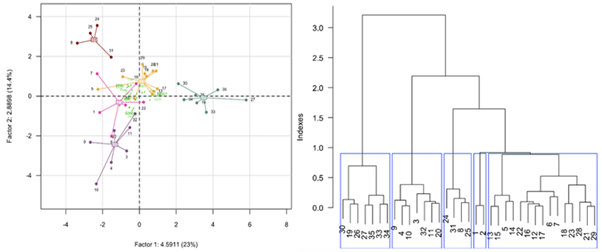
Figure 10. Clustering (dendrograms) - academic skills vs. job competencies
Source: Ownwork using Rstudio software.
Finally, the methodological design employed in this study made it possible to construct a matrix describing the relationship between the 35 academic skills, the 20 job competencies required by the business sector, and the resulting five driving variables. By defining and grouping the driving variables, it was possible to propose two prospective drivers that, according to the findings, give insights into the current scenario and alternative scenarios regarding affinity between the topics under study. Table 4 shows how the five driving variables were grouped into the two proposed prospective drivers.
Connection to engineering education
Despite the changes in business environments and the rapidly advancing society, there is still a reciprocal relationship between soft and technical skills, both essential for future professionals. This study demonstrates how the identified drivers may improve the interaction between the academic and business sectors to support the development of new local competitive capabilities. Disciplines such as engineering, for example, significantly contribute to production dynamics and to the optimization of critical factors that influence an organization’s competitiveness.
Gutiérrez Ossa (2015) highlights the importance of each stakeholder in the university-industry-government relationship, where each must define the necessary internal transformations to align with the needs of research processes as competence of graduates and professionals for companies and the government. In order to improve processes and close the gap between the university and the industry, HEIs play a crucial role in identifying variables that potentiate professional profiles, such as those in engineering, and strengthen the social fabric connecting science and technology. As mentioned by Cote (2018), one of the great paradigm shifts in education involves looking for ways to show skills and demonstrate how future professionals can develop them. According to the author, HEIs need to do more than just impart knowledge; they also need to culturally reframe education.
Study limitations
One limitation encountered in this study was the difficulty in establishing connections with companies in the productive sectors under analysis. Additionally, difficulties arose during the extraction of the academic skills from the programs that were examined. This introduced content ambiguities, as some HEIs did not record competencies, and others lacked the appropriate structure for their wording.
DISCUSSION
According to research by Stocklmayer et al. (2010), students in developing countries are more optimistic about the role of science in society and their aspirations for employment in this field. The results of this study, for instance, which used Colombia as a case study, confirm, through an academic and business analysis, a keen interest in potentializing the relationship between key variables that drive the optimization of production and logistic processes, ultimately contributing to science and technology.
Together with an understanding of students’ potential abilities, academic skills should serve as a guide for structuring the micro-curriculum of courses in professional programs, thus leading the teaching process to the desired learning outcomes. Davis et al. (2016), however, state that there is limited interaction between teachers and course materials, which may be a contributing factor to the lack of a systemic relationship between academia and firms’ requirements.
For their part, Millunchick et al. (2021) mention that there are five important types of student participation in curricular activities: design and competition teams, professional societies, identity-based engineering organizations, college-run engineering organizations, and research with a faculty member. By doing this, the authors explicitly demonstrate that cultivating competencies within the academic community can result in a greater value proposition by considering not only demographic factors but also university knowledge and proactive behavior at the curriculum level.
Educational proficiency, as described by Levander et al. (2020), encompasses the idea that teachers, as agents of the learning process, must have experience in both research and pragmatic areas. The aim is for them to contribute to the services provided by university programs in any area of knowledge and to instill in students the skills necessary to form knowledge for their academic and professional lives.
As mentioned by Adams and Felder (2008), given the rapid changes and expansive scope of the engineering profession, curricula should be modified to promote thinking skills and professional judgment. They must so adapt to different work environments and technological advancements. Learning, according to the authors, must be oriented towards understanding impact, working across different perspectives, and constantly evaluating the essence of being an engineer.
CONCLUSIONS AND FUTURE WORK
Concerning the question motivating this research-What is the systemic relationship between academia and businesses in Colombia regarding the development of skills and competencies related to the optimization of production and logistics processes?-it is concluded that the key drivers in terms of optimization of production and logistics processes are quality defects, work environment, ICT usage, operation traceability, and logistics and planning.
When grouped, these driving variables give rise to two prospective drivers (see Table 4) that allow for the creation of a baseline scenario. This scenario aims to describe the systemic relationship between courses, academic skills, and job competencies, as demonstrated by this study’s findings.
Regarding the first driver-strategic operational and logistics model-the variables are centered on human relations and improvement plans within production processes. The courses that were found to greatly contribute to strengthening academic skills, primarily focused on improving production processes and planning tools, included project formulation, industrial design, bioprocesses, planning, programming and production control, and design of experiments.
Concerning the academic skills oriented toward industrial safety systems and employee skill development, the key courses included operations management and industrial safety, which greatly contribute to competitiveness. Other courses, although related, were found to have a very low impact compared to the previous ones; hence, it is recommended to strengthen or redesign their contents. These courses included quality management and administration, operations research, supply chain management, industrial logistics, system thinking, industrial design, human talent, and strategic planning.
For their part, the academic skills that were found to substantially contribute to the development of the variables within this axis focused primarily on enhancing production processes, planning tools, industrial safety systems, and employee skill development. Their aim is to provide better customer service and strengthen the organization’s promise of value.
Lastly, the job competencies that were found to contribute the most to the associated variables were those related to documenting quality defects, handling non-conformities, managing organizational processes, measuring the work environment, providing technical training for employees, and implementing good practices.
Based on the above, it is clear that job competencies motivate the development of an academic proposal, leading to the belief that there is a proper alignment with employers’ demands. However, the evidence shows that many of these demands for job competencies are met without deepening much in the academic skills mentioned here. To put it in other words, “much is done with very little.”
As for the second driver-traceability platform for quality assurance-the variables are centered on technical skills and technological components. The courses that were found to have a greater influence on the development of ICT-related skills included automated process control, industrial design, bioprocesses, project formulation and evaluation, planning, programming and production control, and design of experiments. Those that were found to have the greatest influence on the development of skills related to planning and logistics were statistical quality control, quality management and administration, supply chain management, plant design and distribution, project formulation and evaluation, simulation models, logistics costs, and packaging. Finally, those that were found to have a major influence on the development of skills related to operation traceability were plant design and distribution, production planning, programming and control, design of experiments, operations research, systems thinking, industrial design, strategic planning, and simulation models.
Furthermore, the academic skills that were found to contribute to the alignment between supply and demand were mainly focused on employability, including technology and production systems, integrated logistics systems and planning, as well as simulation and process optimization techniques. Currently, there is great awareness of the need to better align academic skills with the adoption of new technologies. Nonetheless, in most fields, this is done superficially, with the primary goal of covering a broad spectrum of training.
In terms of job competencies, these were found to be oriented toward understanding planning within the logistic chain-a key aspect of the planning and logistics variable. According to the results, there was an average alignment with the academic skills, being robust with those related to operations, inventories, and integral management systems and poor with those oriented towards the inclusion of technologies. The job competencies within this axis are clearly supported by ICTs in terms of operational logistics, management systems, operations, and follow-up in the logistics chain. The operation traceability variable, for its part, was found to be the one requiring the greatest amount of effort when compared to the other variables on this axis. It primarily focuses on establishing the most important academic skills for the advancement of the profession. It is evident that these can be the areas with more emphasis on the development of improvement actions. Yet, it is important to assess whether the content used in the courses is actually the most updated, given the predominant and fundamental nature of this competency in academic programs. In this context, the motricity of the environment and the availability of partnerships with productive sectors are deemed vital.
In light of the above, and regarding the relationship between job competencies and the most relevant academic skills within the ICT usage variable, a low correlation was observed between firms’ demands and their alignment with academia. This could be considered too optimistic when compared to the reality, as it could lead to the belief that these skills are significantly developed and deepened. However, this can be contested given the wide range of possibilities and tools available in the environment.
In conducting a prospective analysis, it becomes imperative to advance the construction of future scenarios regarding the optimization of production and logistics processes, starting from a base scenario and the system’s driving variables. This could help propose strategies (from both academic and production perspectives) that contribute to the strengthening of the university-industry relationship and the development of educational models closely aligned with the business context.
This Colombian case study aims to assist in identifying the factors that can guide training programs in HEIs, specifically in the field of optimizing production and logistics processes in emerging countries. The responsibility of HEIs will be to develop curriculum proposals for Industrial Engineering and related programs that are in line with industry demands. To achieve this, they ought to promote strategies such as classroom projects, business challenges, targeted internships, and collaborative consultancies. These strategies, in addition to involving all stakeholders in the educational model, should create relevant roadmaps, from graduate profiles and academic skills to relevant job competencies.














